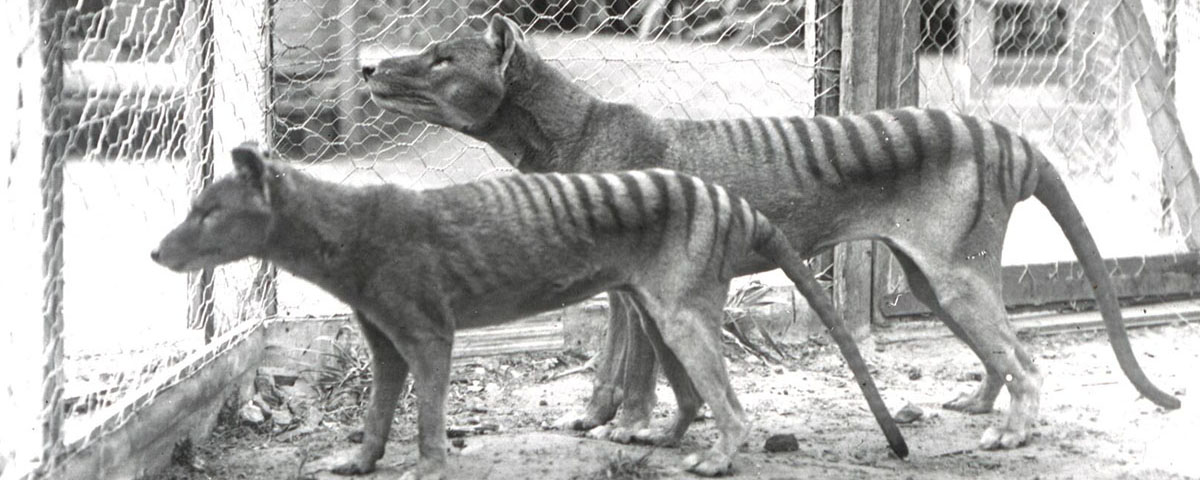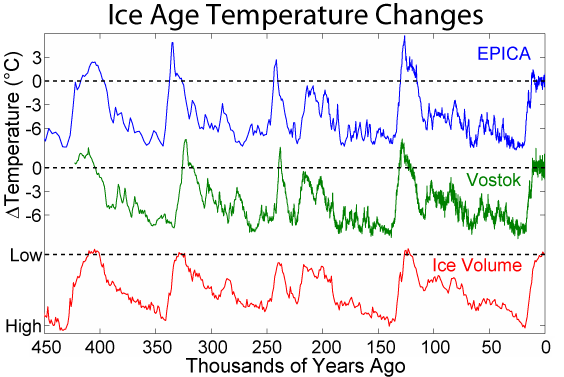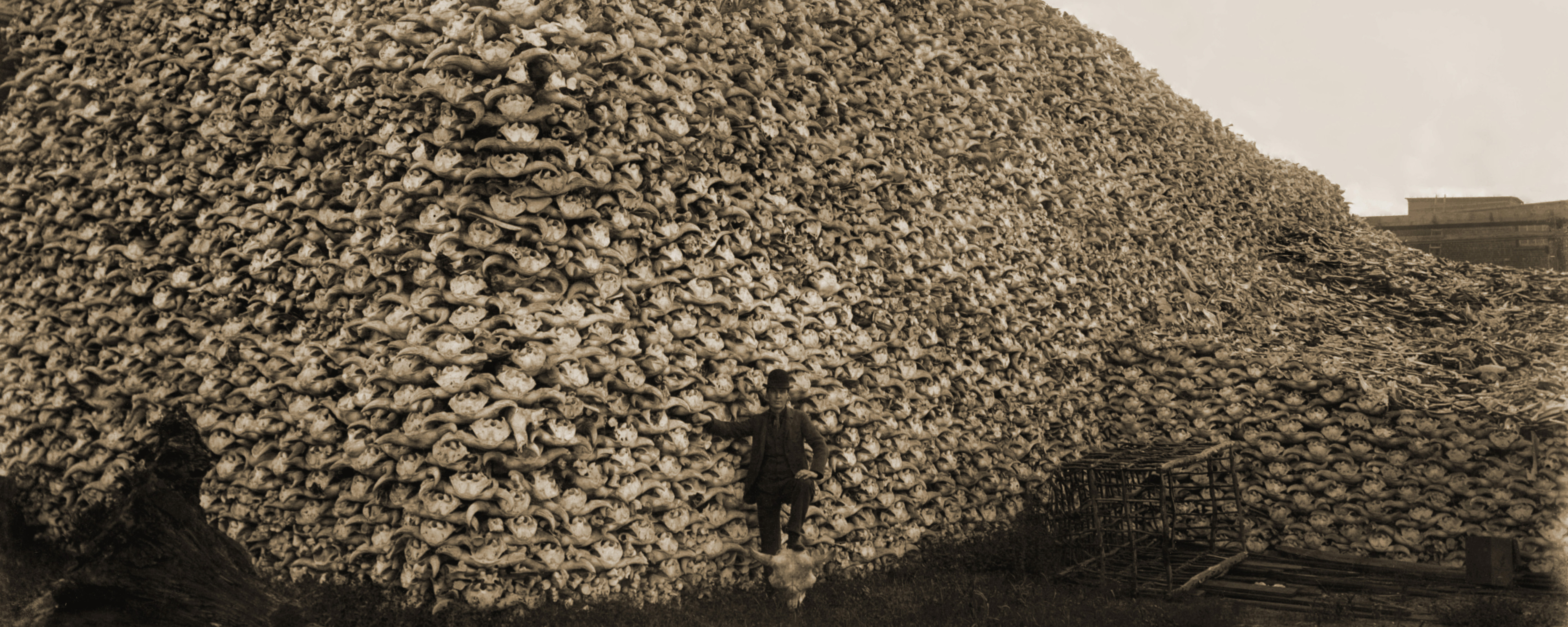


"Given extensive paleontological evidence for biotic change, the conclusion must be that, absent such long-term perspectives, most biological benchmarks--for abundance, distribution, variability, drivers, and dynamics--and rate estimates that are embedded within the last 50-100 y are probably far from natural. Natural may not be an achievable or desirable goal. However, paleobiological data for the recent past confront us with the true status of modern-day biota and with the very real potential that climate-driven changes will result in elevated extinctions rather than community disruptions alone, owing to the continued press of other human factors and damage already sustained. Paleontological data, derived both from fully buried fossil assemblages and from death assemblages that are still accumulating alongside living populations, constitute a powerful source of insights into the dynamics of extant (and recently extinct) species, communities, and ecosystems over the interdecadal to millennial time frames at which environments undergo natural and human-driven change. Improved environmental proxies, age-control, and confidence in paleobiological evidence mean that disparate data types should no longer impede the development of a rigorous "Biology in the Anthropocene" that squarely faces legacy effects, ongoing trends, and disequilibrial states as default conditions. We should in fact embrace the modern world as an unnatural experiment in progress, no matter how uncomfortable our eventual discoveries may prove to be, and commit to greater integration of modern and paleo approaches in both research and training. The fossil record's future includes its ability to provide critical data and new time frames for conservation, management, and ecological theory." -- Susan Kidwell (2015. Biology in the Anthropocene: challenge and insights from the young fossil records. PNAS 112:4922-2929.)
and
"Naysayers at their polite best chided the rewilders for romanticizing the past; at their sniping worst, for tempting a 'Jurassic Park' disaster. To these the rewilders quietly voiced a sad and stinging reply. The most dangerous experiment is already underway. The future most to be feared is the one now dictated by the status quo. In vanquishing our most fearsome beasts from the modern world, we have released worse monsters from the compound. They come in disarmingly meek and insidious forms, in chewing plagues of hoofed beasts and sweeping hordes of rats and cats and second-order predators. They come in the form of denuded seascapes and barren forests, ruled by jellyfish and urchins, killer deer and sociopathic monkeys. They come as haunting demons of the human mind. In conquering the fearsome beasts, the conquerors had unwittingly orphaned themselves." -- William Stolzenburg (2008), Where the Wild Things Were: Life, Death, and Ecological Wreckage in a Land of Vanishing Predators
BIG QUESTIONS: How does the fossil record inform us about the on-going modern extinctions? How can the paleontological perspective be used in service of endangered species and threatened ecosystems?
What Good is a Fossil Record?
That is to say, what benefit does society receive from the existence of fossils of the ancient world? There are many of them that are scientific, or even aesthetic:
But are there any pragmatic benefits? YES!
Compared to the earlier Pleistocene Epoch, the Holocene has been an epoch of climate stability. It was rare in the Pleistocene to have a 12 kyr warm pulse with only a degree or two of average change; instead, we see fluctuations of up to 7-9 C°:

And all our agricultural, freshwater, coastline, etc., needs were developed in the context of this period of stability.
Agriculture has allowed human populations to soar:

Agriculture allowed humans to capture more and more of the land's biomass. Also, as agricultural lands expanded, wildlife tended to be displaced, bringing their population down. Furthermore, wild species of animals were domesticated into new forms (aurochs into cattle; boars into pigs; mouflon into sheep; wild goats into goats; wild horses into horses; wild asses into donkeys; etc.): the wild species tended to decline from habitat loss and hunting while the domestic forms flourished under human husbandry.
The colonization of the Brave New Worlds (Sahul and the Americas) was not the end of the expansion of Homo sapiens. During the Holocene humans spread to many oceanic islands in the Pacific, Indian Ocean, and elsewhere. In the wake of new arrivals, many species became extinct. For example, the total number of bird species at 1 CE was probably 3000 more than today, largely do to losses of island avian species.
Let's take a look at some of the patterns of extinction.
Historic Cases Recognized at the Time:
But there are many other larger-scale or more dramatic extinctions during the Holocene:
Madagascar: Humans (settlers from Borneo, rather than nearby southeastern Africa) reached the island of Madagascar between 350 and 550 CE. They arrived with an agricultural system based on slash-and-burn. Through a combination of habitat destruction and direct hunting, they wiped out such as:
New Zealand: These islands remained uninhabited until 1280 CE, when Polynesians first arrived. By 1400 (possibly before) they had wiped out many taxa, including:
In the case of the moa there is direct evidence of hunting and feeding by humans, and this seems likely in the case of the adzebills, too. The Haast's eagles were probably victims of trophic collapse: with the moa gone, there was no targets left (other than men) large enough to serve as prey.
Tasmania: Part of Sahul, it was isolated from mainland Australia as the sea rose in the last deglaciation. Its inhabitants lost a substantial part of earlier technology, such as bone tools, boomerangs, hooks, sewing, and the ability to start fires. In many ways, they had reverted to Homo erectus-grade technologies. In Tasmania some of the larger animals that were wiped out on mainland Australia survived, most famously the thylacine or Tasmanian tiger or Tasmanian wolf (Thylacinus cynocephalus. This animal was a marsupial predator strongly convergent on placental wolves. With the settlement by Europeans in 1803, a systematic campaign of extermination of both the Tasmanian people and Tasmanian tiger began. Sadly, both were successful. The native population of Tasmania was hunted down to the last individual and their language and culture lost for all time: the last full-blooded Tasmanians were the women Truganini who died on 8 May 1876 and Fanny Cochrane Smith who died in 1905. The thylacines actually survived longer, with the last specimen dying in captivity on 7 September 1936. Below is a compilation of all surviving film footage of this species (all of it in zoos, rather than in the wild):
The mainland Old World: But these are all small, isolated lands. Surely extinction hasn't happened in recent times on the continents? Sadly, here to. For example, the quagga (Equus quagga quagga, an extinct southern African subspecies of plains zebra: 12 August 1883), the aurochs of Eurasia (Bos primigenius, although technically a pseudoextinction as the domestic cow Bos taurus is a descendant: 1637), the tarpan of Eurasia (Equus ferus ferus, the ancestor of the domestic horse Equus caballus: 1879 for the last scientifically verifiable non-hybrid), and others. And the extinctions in North America were particularly striking.
Continental North America: Here the extinctions included not only rare forms, but some of the most common species to inhabit the continent:
A very, very close call was Bison bison, the plains bison, largest and by far most common large mammal of North America after the megafaunal extinction. Their huge herds made them essentially hunt-proof to the Folsom points--and later bows and arrows--of Native Americans. But arrival of advanced rifle technology, the expansion westward of American farming and railroads, and a tremendous market for bones for fertilizer and hides for many numerous uses led to commercial hunting on a phenomenal scale, bringing species dangerous close to extinction at the end of the 19th Century. Once hundreds of millions formed vast herds, but by 1890 less than 1000 individuals remained. Political and social action from the grassroots on up to Congress and the White House led to protection of this symbol of the American West, and the species was saved and once again roams the West.
20th Century: Beginning of the Sixth Mass Extinction: But all these pale in comparison to the widespread ecological devastation of the 20th and 21st Century. The huge increase in human population, and the requirements to feed this population and supply us with homes and products, means we impact the biosphere on an ever-increasing scale:

It is no longer direct hunting that is the major issue (although still ongoing on land in the form of the pet trade, trade in exotic animal products like ivory, and slaughtering rare species for "traditional Eastern medicine" ingredients). The primary dangers are:

It has been argued that the net result of this is that Earth is in the sixth major mass extinction, as the impact now includes the marine realm, small organisms, etc. (and not just the megafauna). Like all mass extinctions, this stems from the fact that the environmental changes are happening faster than organisms can evolve to adapt to them. Although extinction rates are no where near the level of the Big Five, we have instigated the same type of causes that happened before (extreme eutrophication, like the Ordovician-Silurian and Devonian-Carboniferous; ocean acidification, at least a partial contributor to the Permo-Triassic and Triassic-Jurassic [and PETM]).
A somewhat unexpected recent (as in April 2018) discovery is that the general public greatly underestimates the predicament of the better known and "charismatic" species. That is, some species which are overexposed publicly (such as giraffes and elephants) are assumed to be less threatened, whereas in reality they have had catastrophic population crashes in the last several decades. Below is seen the percent loss of species over time on the left, and the percent who incorrectly answered the question "Is this species endangered?" (correct answer for all is "yes"):
from Courchamp et al. (2018 PLoS Biology 16(4): e2003997
Modern conservation ecologists now refer to defaunation: a combination of global extinction, regional extinction (aka "extirpation"), and population decline.
Defaunation isn't the only change (or at least not directly). Climate change means that when different temperatures reach different spots in a year during its annual cycle; so the preferred seasonal ranges for animals or growing zones for plants change. This might result in changes in the phenology (seasonal life cycle events) of different species: sometimes this disrupts the evolved patterns of growth and development.
Additionally, there are trophic cascades and other ecosystem cascades by the loss of key species within an ecosystem. In trophic cascades, loss of apex predators removes checks on the large herbivores, which may result in overfeeding by these, reduction of plant diversity, etc. Sometimes the effects can be even more complex. Ecosystem cascades are the more general category. We saw with the loss of the mammoths, the mammoth steppe biome with its high diversity was lost. Similar changes are seen in the modern world as "architect" animals are removed.
And for our own parochial interest: the living world provides ecosystem services: activities which are beneficial (or even required) for human life and economy, but for which we do not pay. Some such benefits are:
A big part of the crisis, however, is that even though it is incredibly fast by geologic timescales, this is going on slower than society notices. Additionally, by the time that field ecology really got going, especially in the marine realm (the mid-20th Century), the crisis was well underway. So how do we know what is really "natural"?
That is where conservation paleobiology comes in. Largely pioneered by invertebrate paleontologist Jeremy Jackson, conservation paleobiology works by looking at the fossil record of the latest Quaternary and early Holocene to get a description of the biodiversity of the contemporary species prior to any significant influence of humans. Furthermore, more ancient crises (like PETM and mass extinction recoveries) give us evidence of how the biosphere reacts to tremendous rapid changes. This evidence from the fossil record allows conservation biologists to make better plans in dealing with current and near-future changes.
It has been noted that conservation paleobiology gives us a tremendous amount of useful data, such as:
But is extinction really the end? A few paleontologists and other scientists have suggested methods to recover ancient ecosystems, or even ancient species.
Rewilding: If a species still persists in some region, but has undergone extirpation at another, it is possible to reintroduce it. But what about cases where the extinct taxon is globally extinct? It might be possible rewild it: that is, to introduce to a habitat a closely related species with similar biology and ecology to replace the original one. These efforts are already ongoing at various sites in the world, and generally show promise (so long as unwanted introduced invasives can be eliminated, too.)
Rewilding can benefit an ecosystem by restoring links that were once present, and thus increase the biodiversity and productivity of that region. This way habitats can be reestablished where key taxa are extinct. (In particular, megafauna tend to be major architects of ecosystems.) For instance, a great number of large fruits with huge seeds (like avocados) no longer have natural dispersers. That is because the animals which DID swallow these fruit and distributed the seeds are largely extinct: various proboscideans, giant ground sloths, big marsupials, giant tortoises, etc. (depending on where you are on the planet). These are also the sorts of animals that have preferentially died out in the Pleistocene and Holocene extinctions.
A promising example of rewilding to reestablish an old link in an ecosystem is on Mauritius (a small island in the Indian Ocean, east of Madagascar). Although famous for the dodo, Mauritius had a number of other recent extinctions: in particular, two species of giant tortoise of the genus Cylindraspis. Like other living giant tortoises, these were fruit eaters. They were the major animals to eat the large fruit of the native ebony tree Diospyros egrettarum. This species is down to a mere 10 individuals on Mauritius, and a few hundred on a offshore island. These seeds of the ebony tree do not germinate well on their own. But introducing the giant Aldabra tortoise (Aldabrachelys gigantea) to that offshore island has resulted in a spread of the slow-growing ebony plant. Similar experiments elsewhere show that reintroduction of the Aldabra giant tortoise (in combination with removal of invasive plants and animals) help old ecosystems reestablish their links.
We can see trophic cascades (and their reversal) at play at the reintroduction of wolves after an absence of 7 decades to Yellowstone Park:
In general, we recognize that some species are ecosystem engineers: through their own actions, they environment around them is transformed. We saw an earlier example of this with the mammoth steppe: the feeding (and pooping) habits of Mammuthus resulted in a high-productivity grasslands, supporting a diverse community of animals and plants. (And the loss of the mammoths resulting in the disappearance of this biome.) Modern ecosystem engineers including the living proboscideans (who clear out patches in the forest by breaking down trees) and beavers (whose dams produce small lakes that support diverse wildlife). Various extinct animals presumably had similar roles (e.g., extinct proboscideans and giant ground sloths also as creating patches in the woods.)
Ecological engineers are just one example of a keystone species: a species with a disproportionately large effect on its natural environment. The keystone species need not directly shape its environment: for instance, see the video about wolves in Yellowstone.
So many people interesting in rewilding are not simply interested in reintroductions (putting species back where they once lived.) They are specifically interested in restoring ecosystem structure by the return of lost keystone species.
Pleistocene rewilding takes this to a greater extreme. Many ecosystems once relied on giant mammal species. Although the megafauna of the Pleistocene are gone, there are sometimes close relatives from some part of the world that might be used to "fill in" ecologically in regions like North America or Pleistocene Park (which actually IS an ongoing project) in boreal northeastern Siberia. The idea is to release ecological equivalents (lions or tigers for Panthera atrox; Indian elephants for mammoths, etc.; and so forth), to allow an approximation of the Pleistocene ecosystem to return.
There are some problems with this approach, however:
But do they actually have to be close relatives? A new study from the Spring of 2020 examined key attributes of extant introduced animals and recently extinct mammals of those same regions in terms of feeding types, digestion types, habitat, etc., to find what the closest matches were in terms of ecosystem function. In some cases the closest matches were close relatives (for instance, the living capybara Hydrochoerus hydrochaeris for the Pleistocene southern North American capybara Neochoerus aesopi.) But in other cases the "nearest neighbors" in terms of ecosystem fumnction were very distant relatives: for instance, the introduced sambar deer Rusa unicolor for the Pleistocene giant kangaroo Sthenurus stirlingi in Australia. It led the researchers to speculate that the hippos (Hippopotamus amphibius) introduced by drug lord Pablo Escobar to Columbia might restore the ecological function of the recently extinct toxodonts. Whether this study is supported by observations of wildlife environmental interaction remains to be seen.
De-Extinction: But what if we didn't have to make do with partial replacements? What if instead we could REALLY bring back a fossil species? Is it possible to de-extinct (I think the term "re-extant" would be better) fossil species?
Theoretically, there are several approaches, now that fossil genomes have been recovered:
Two projects are ongoing. The so-called Lazarus Project is working to de-extinct the gastric-brooding frog Rheobatrachus silus, which was wiped out in the wild in the mid-1980s. Another team has attempted to clone the extinct-in-2000 Iberian ibex Capra pyrenaica pyrenaica (the clone died minutes after birth). And (although technically not totally extinct), the northern white rhino (Ceratotherium simum cottoni) has only two living members, both in captivity: the last male died 18 March 2018. These two females are too old to bear young. But sperm and eggs have been collected from various individuals, and since May 2016 attempts have been made to fertilize the eggs, with the intention to implant the embryos into the very closely related southern white rhino (C. s. simum).
In Spring 2025 a biotech firm named Colossal claimed to have produced de-extinct dire wolves (Aenocyon dirus). What has been described reveals that these are actually genetically modified grey wolves (Canis lupus) in which 16 or so genes from the known dire wolf genomes have been inserted. So they might be better described as "dire-ized wolves".
If restored, the restored species could be restored to the wild as in re-wilding, removing the objection to it being the wrong species. But a whole new set of problems arise:
A whole additional set of problems lie with trying to clone birds and other animals with shelled eggs. Getting the new genetic material into the egg is very difficult since you can't simply deal with the egg after they have left the body (as in fish and amphibians with external fertilization) or reimplant eggs removed for fertilization (as in therian mammals). Indeed, although we have cloned some fish, amphibians, and mammals, as of May 2025 no one has successfully cloned a bird or other sauropsid: not even a chicken! So do not expect clones of dodos, passenger pigeons, moa, (or Mesozoic dinosaurs!) anytime soon.
And, of course, the whole "world has changed--and will change a lot more VERY soon--since the Pleistocene" issue applies. Is it worth billions of dollars to bring back wooly mammoths to a world in which their cold habitat disappears?
Perhaps the most important issue, though, is that conservation money is rather limited. There are many critically endangered habitats and species in the world today; does it make more sense to try and protect these, or try and bring back an extinct form?
But one thing that you, as a student of the fossil record, should NOT argue is that various species were "meant to die". As we have seen, extinction is NOT some preordained fate, even though it does fall on the majority of species. And in particular, Holocene and Pleistocene extinctions are largely (either directly or indirectly) OUR fault.
If you want more information and debates (pro and con) about the de-extinction concept, the TED conference in which the term was introduced is available online. Also, the 2014 Howard Hughes Medical Institute BioInteractive series of talks was about the Sixth Extinction and how we should respond.
If you are made of stern stuff, you can check out the very well-done documentary Racing Extinction
